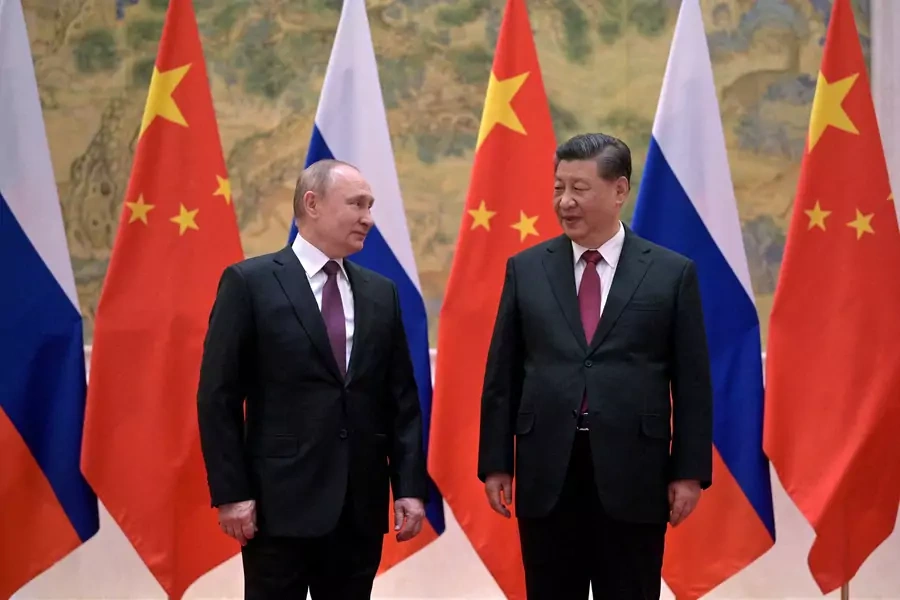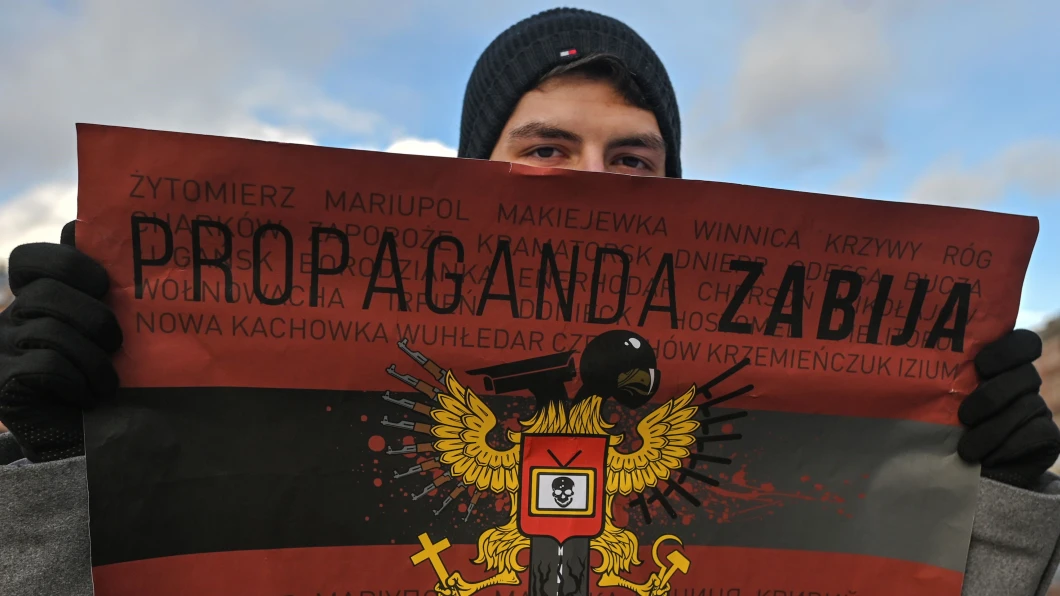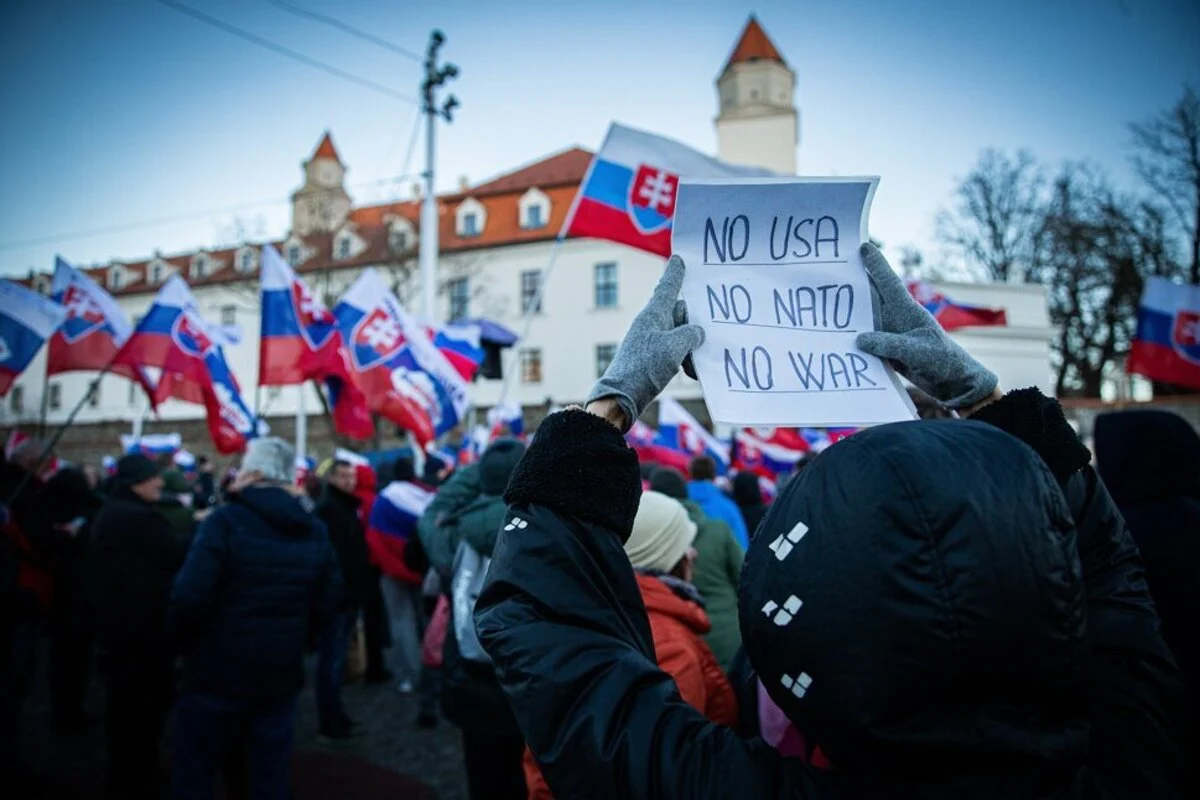Date: 29 August 2023 Author: Katja-Elisabeth Herrmann
How are Russian and Chinese Disinformation in V4 countries different?
The use of disinformation to pursue foreign and domestic policy objectives is a recurrent topic that continues to echo across policy and academia. With the most recent developments in the war in Ukraine, disinformation has risen as a public issue in various political domains across Central and Eastern Europe, particularly in Visegrad countries or V4 (the Czech Republic, Hungary, Poland, and Slovakia).

Historically, V4 countries have been the preferred targets of Russian disinformation for their former links to the Soviet Union. More recently, China sought to extend its soft power in the region employing disinformation, manipulation of information, and misrepresentation of facts more evidently during the Covid-19 pandemic and still ongoing amidst the war in Ukraine.
Using manipulative techniques, Russia has predominantly exerted a degree of influence in V4 countries inciting polarization and social distrust among the region’s wider population. The first EEAS Report on Foreign Information Manipulation and Interference Threats classifies the presumed objectives of Foreign Information Manipulation and Interference (FIMI) actors as either to Dismiss: to push back against criticism, deny allegations, and denigrate the source; to Distort: to change the framing and twist and change the narrative; to Distract: to turn attention to a different actor or narrative or to shift the blame; to Dismay: to threaten and scare off opponents; and/or to Divide: to create conflict and widen divisions within or between communities and groups. The Report compares the Tactics, Techniques, and Procedures (TTPs) of Russia and China among other actors and concludes that in the case of China, the majority (56%) of incidents intended to ‘distract’ while in the case of incidents carried out by channels linked to Russia, 42% pursued a similar intent.
Some of the narratives forming part of the Russian disinformation toolkit are spreading anti-Western sentiments, undermining NATO, and discrediting Ukraine. Chinese techniques and aims are different from those presented by the Russian side. While Chinese objectives depart from a broader intention to position itself as a more reliable alternative and to protect its image against the Western economic and political model, Russian intentions are far from discrediting the West. Accordingly “Russia has operationalized the concept of perpetual adversarial competition”1 whereby, Russia antagonises foreign entities and models its policies against these, particularly in the information space.
One point that marks the difference between Russian and Chinese disinformation techniques is the control over the information. NATO StratCom COE writes about a black-market social media manipulation, where a “vibrant online market for buyers and sellers of tools and services for social media manipulation”2 has emerged. This practice has been particularly linked to the Russian means of operation extending over various countries beyond Europe. Unlike Russia, where disinformation efforts can be more decentralized and diverse, Chinese disinformation is often tightly controlled by the state. Maintaining a strong grip over state media and social communication media, the Chinese Communist Party is able to exert greater control over the narrative it seeks to convey – even to the audience abroad. Utilizing censorship and control over the flow of information within its own borders, China has been able to inflict a greater impact on society than Russia. The effectiveness of China’s information warfare in Czechia, Poland, Hungary, and Slovakia substantially varies as well. China’s propaganda and disinformation campaigns lack substantial effectiveness, measured in the degree of reach, either due to language barriers or the short network extension.
In a study conducted by the Association for International Affairs (AMO), attention is devoted to the role of Chinese embassies in spreading disinformation in V4 countries – the Czech Republic, Hungary, Poland, and Slovakia. The study concludes that Chinese embassies using Twitter across Europe often functioned as amplifiers working on a coordinated pattern.3 Moreover, using English as a vehicular language (71%), Chinese practices address a more general rather than a specific or more targeted audience as Russian practices suggest.
Finally, while it is often spoken about information war against the West, it must be said that the West does not employ similar strategies against these States, but rather adopts a contingency posture countering disinformation and propaganda from these two states. The EU’s East StratCom Task Force with its “EU vs disinformation” campaign and the StopFake website focusing on disinformation are excellent examples of countermeasures in place. Notwithstanding, it is pertinent to acknowledge that FIMI actors are highly adaptable and the effects of ‘overfighting’ information on social media can be seen as an expression of censorship. According to polls in the CEE countries, “the majority of citizens see journalists and national authorities as having the chief responsibility in combatting disinformation. The former is the most preferred solution in the Czech Republic, Poland, Romania, and Slovakia.”4
Conclusion
While the two countries have their own separate approaches to propaganda and disinformation, it’s important to recognize that both Russia and China use disinformation as part of their strategic toolkits to extend foreign and domestic policy objectives. The specific techniques, objectives, and success can vary according to their intended audience and goals. Based on their respective geopolitical goals, historical contexts, and cultural factors, Chinese and Russian disinformation campaigns in V4 countries also vary in their degree of effectiveness. However, it remains true that whilst their strategies and tactics differ, the countries have learned from each other and echoed each other‘s narratives targeting Western countries.
We have reached a point where disinformation and misleading facts roam around and coexist with veridic information. It is the task of fact-checkers to debunk and for the general public to distinguish and discern the truth from the misleading. Identifying patterns of behavior on social media requires attention but also comprehension of the emerging narratives and how countries and different actors weaponize these for their own profit.
Sources:
1. Blablová Veronika, “China’s Twiplomacy in Europe in the Shadow of the Russian Invasion of Ukraine” Association for International Affairs – MapInfluenCE (June 13, 2023). https://mapinfluence.eu/wp-content/uploads/2023/06/Mapinfluence_policy-paper_Twiplomacy_A4_05_web.pdf
2. Bokša Michal, “Russian Information Warfare in Central and Eastern Europe: Strategies, Impact, Countermeasures” The German Marshall Fund of the United States (2019). https://www.gmfus.org/sites/default/files/Russia%20disinformation%20CEE%20-%20June%204.pdf
3. Dobrowolska, J. (2023). A New Look at Chinese Disinformation – Growing Convergence with Russian Tactics and the COVID-19 Pandemic. Com.Press, 6(1), 72-81.
4. Karásková Ivana, Alicja Bachulska, Tamás Matura, Filip Šebok, Matej Šimalčík, “China’s Propaganda and Disinformation Campaigns in Central Europe” Association for International Affairs – MapInfluenCE (August 28, 2020). https://mapinfluence.eu/en/chinas-propaganda-and-disinformation-campaigns-in-central-europe/
5. Singularex NATO StratCom COE, “The Black Market for Social Media Manipulation” Riga: NATO Strategic Communications Centre of Excellence (19th January 2019). https://stratcomcoe.org/publications/the-black-market-for-social-media-manipulation/103
6. Szczudlik Justyna and Agnieszka Legucka “Breaking Down Russian and Chinese Disinformation and Propaganda About the War in Ukraine” Polish Institute of International Affairs (January 17, 2023). https://www.pism.pl/publications/breaking-down-russian-and-chinese-disinformation-and-propaganda-about-the-war-in-ukraine
7. The European External Action Service (EEAS) Strategic Communications, Task Forces, and Information Analysis (STRAT.2) “1st EEAS Report on Foreign Information Manipulation and Interference Threats – Towards a framework for networked defence” (February 2023). https://euvsdisinfo.eu/uploads/2023/02/EEAS-ThreatReport-February2023-02.pdf
8. United States Department of State “Disarming Disinformation: Our Shared Responsibility” (August 17, 2023). https://www.state.gov/disarming-disinformation/
Support Us
If content prepared by Warsaw Institute team is useful for you, please support our actions. Donations from private persons are necessary for the continuation of our mission.
All texts published by the Warsaw Institute Foundation may be disseminated on the condition that their origin is credited. Images may not be used without permission.
















